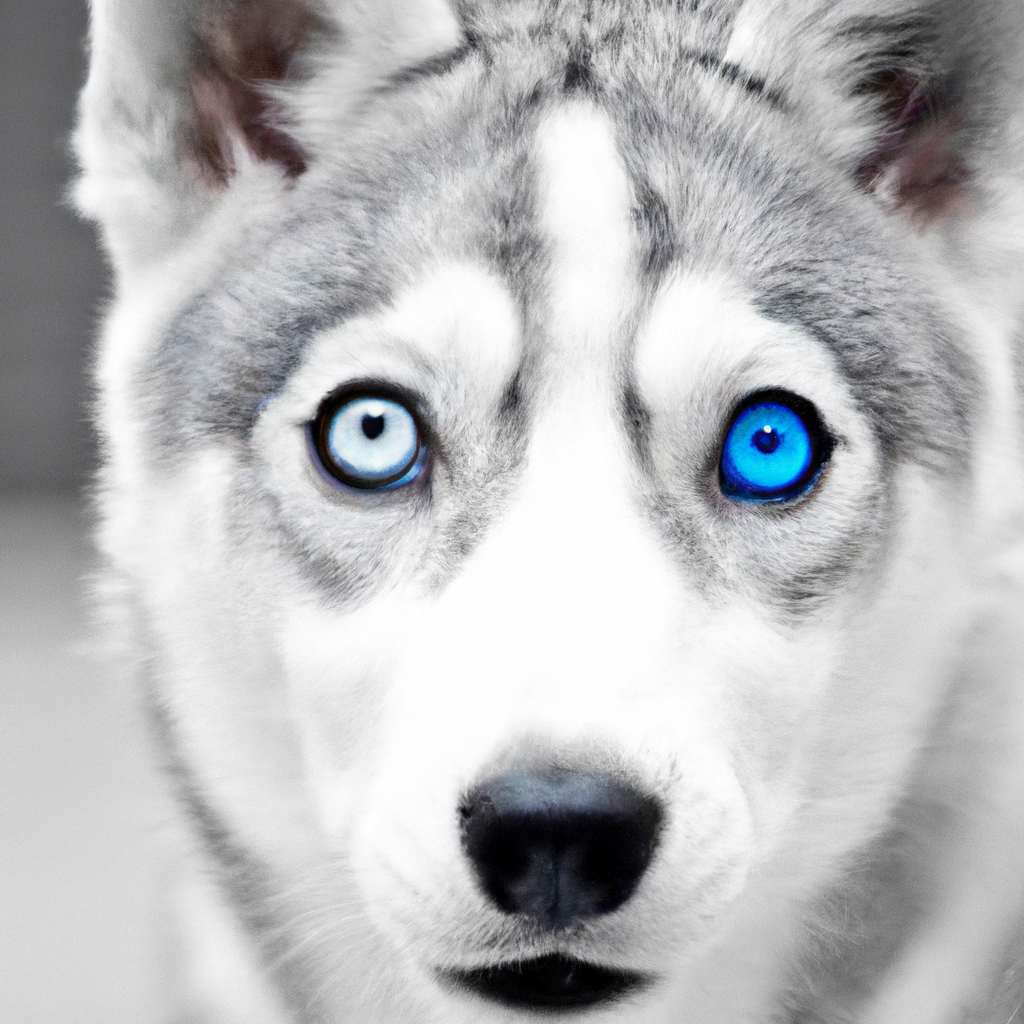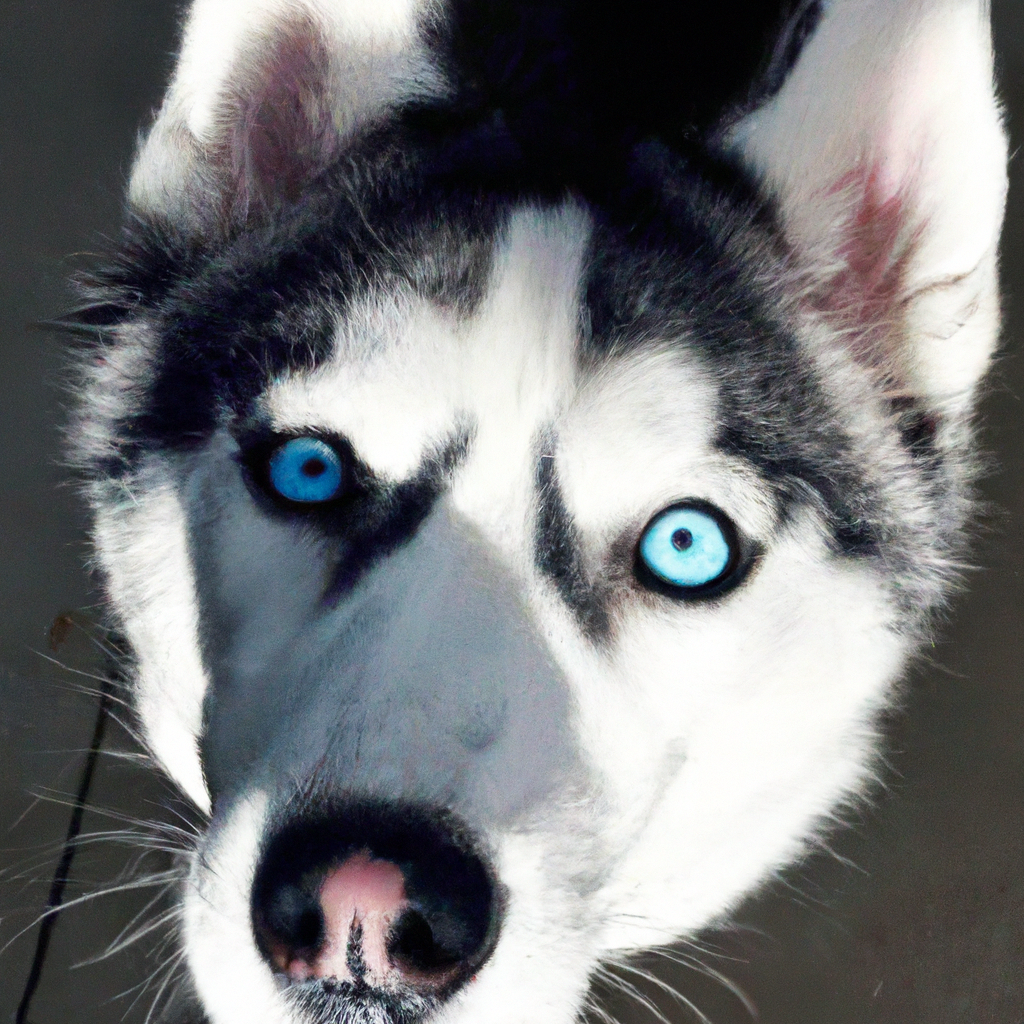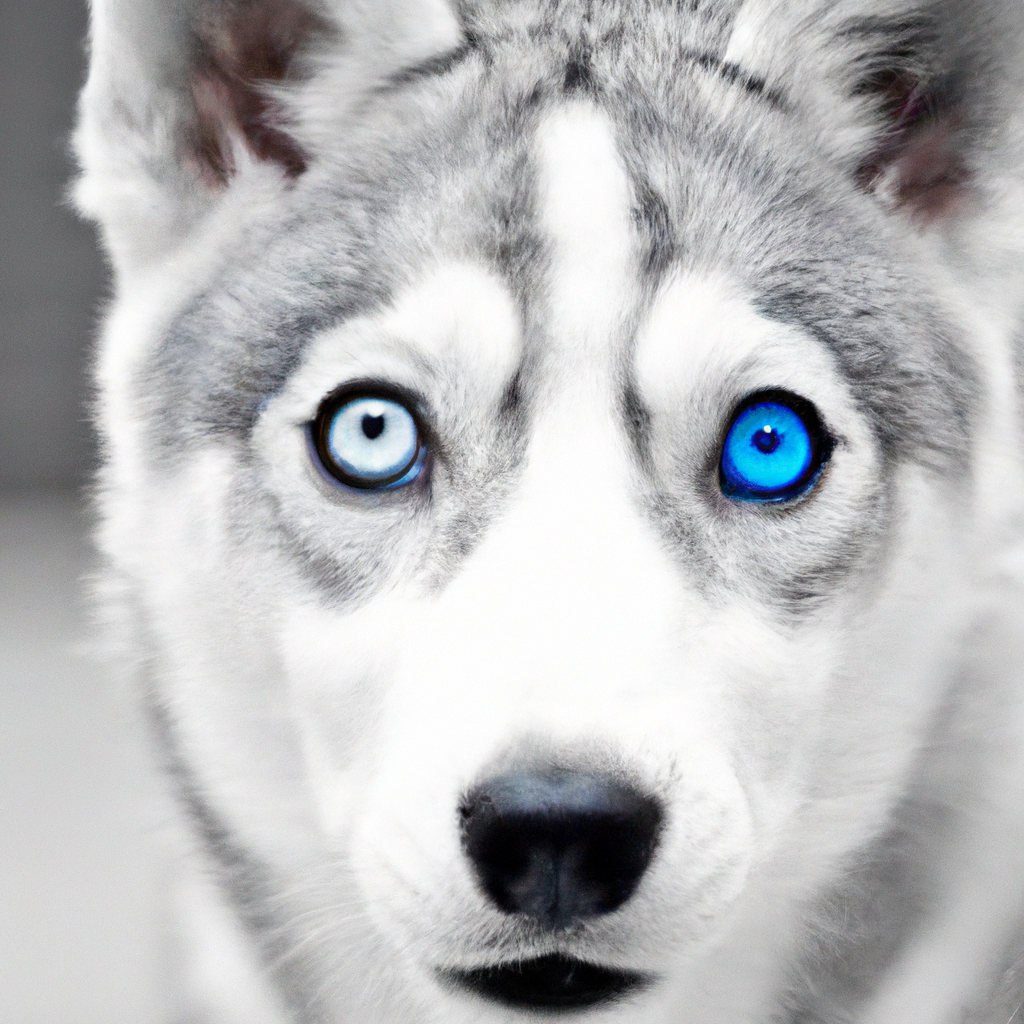Have you ever wondered why huskies are so dramatic? These charming and expressive dogs have a reputation for their theatrical behavior and it’s hard not to be captivated by their antics. From their exaggerated facial expressions to their theatrical howls and grumbles, huskies certainly know how to make a statement. But what is behind this dramatic behavior? In this article, we will explore the reasons why huskies are so dramatic, shedding light on their unique personalities and shedding some light on what makes them truly special. So, get ready for a behind-the-scenes look at the dramatic world of huskies!

Physical appearance
Distinctive features
One of the most recognizable features of Huskies is their striking appearance. With their majestic upright ears, bushy tails that curl over their backs, and expressive eyes, Huskies stand out wherever they go. Another distinctive feature is their nimble, athletic build, which allows them to excel in various physical activities.
Fur color variations
Huskies come in a range of coat colors, adding to their stunning visual appeal. From classic black and white to shades of gray, red, and even pure white, each Husky’s fur is uniquely beautiful. These color variations allow for a wide array of Husky coats, making them real showstoppers.
Eye color intensity
One of the most captivating features of Huskies is their unique eye color. While most dogs have brown eyes, Huskies can have striking blue eyes, and some even have heterochromia, where each eye is a different color. The intensity of their eye color only adds to their enchanting and hypnotic gaze, captivating anyone who locks eyes with them.
Temperament
Independent nature
Huskies possess an independent and self-determined nature, which makes them stand out among other dog breeds. This independent streak can make training and obedience challenging at times, but it also contributes to their adventurous and free-spirited personality.
Strong-willed personality
Alongside their independent nature, Huskies have an inherent strong-willed personality. They are known for their determination and persistence, which can be both endearing and frustrating for their owners. Despite their sometimes stubborn attitude, this strong-willed nature is what enables them to accomplish impressive feats, such as sled pulling and working in harsh conditions.
Playfulness and energy
Huskies are renowned for their playful and energetic nature. They have boundless energy levels, which require regular exercise and mental stimulation to keep them happy and content. Their playful disposition makes them great companions for active individuals or families who enjoy outdoor activities and engaging games.
High prey drive
Due to their background as sled dogs, Huskies have a high prey drive. This means they have a natural instinct to chase and pursue small animals. It’s essential for Husky owners to be aware of this instinct and take precautions when interacting with other animals, such as keeping them on a leash or ensuring proper training and socialization.
Communication skills
Vocalization
Huskies are known for their vocal nature and unique range of vocalizations. They have a wide repertoire of howls, barks, and “talks,” which they use to communicate their needs and express their emotions. From “woo-woos” to long, haunting howls, their vocalizations are a signature trait of this breed.
Howling behavior
Howling is an essential aspect of Husky communication. They howl to attract attention, express loneliness, or as a way of joining in with other dogs’ howls. This behavior is deeply ingrained in their ancestry as sled dogs, where howling was used to communicate across long distances.
Body language
In addition to vocalizations, Huskies communicate through their body language. Their erect ears, wagging tails, and intense gaze all convey different messages. For example, a relaxed and loose tail indicates a friendly and calm demeanor, while a raised tail signifies alertness or potential aggression. Understanding their body language can help owners better interpret their Husky’s moods and needs.

Attention-seeking behavior
Demanding affection
Huskies are known for their affectionate nature and desire for human interaction. They seek attention and thrive on physical affection from their owners. They may nudge and lean against you, offering their paw for a shake, or even “talk” to get your attention. It’s important to respond to their affectionate gestures to fulfill their need for connection and bonding.
Attention-seeking vocalizations
When Huskies crave attention, they may resort to vocalizations to express their frustration or desire for interaction. They may “woo-woo” or bark incessantly to grab your attention, especially if they feel neglected or left alone for extended periods. Responding to their vocalizations and providing the attention they seek can help alleviate their anxiety.
Attention-seeking actions
Aside from vocalizations, Huskies may engage in attention-seeking actions to gain your focus. They might paw at you, playfully nibble at your hand, or bring you their favorite toy as a way of encouraging playtime or interaction. Recognizing and participating in these actions can reinforce the bond between you and your Husky.
Separation anxiety
Attachment to owners
Huskies form strong attachments to their owners and thrive on human companionship. They are pack animals by nature and consider their family members as their pack. This attachment can lead to separation anxiety when they are left alone for extended periods, as they crave the presence and security of their human pack.
Fear of abandonment
In addition to their attachment to their owners, Huskies have a deep-seated fear of abandonment. This fear is rooted in their working dog heritage, as they were bred to rely on their pack for survival in harsh conditions. Being left alone for extended periods can trigger anxiety in Huskies, leading to destructive behaviors or excessive vocalization.
Symptoms of separation anxiety
When experiencing separation anxiety, Huskies may exhibit various symptoms. These can include excessive drooling, pacing, destructive chewing, howling or barking, attempting to escape their confinement, and even self-harm. It’s essential to address separation anxiety with proper training, mental stimulation, and gradually increasing alone time to avoid long-term emotional distress for your furry friend.
Breed traits
Working dog heritage
Huskies have a rich history as working dogs, particularly in cold climates. They were originally bred by the Chukchi people in Siberia and used for pulling sleds, hunting, and providing companionship. This working dog heritage has instilled in them a strong sense of purpose and a desire to engage in physical and mental activities.
Desire for mental stimulation
Huskies have highly active minds that require mental stimulation to keep them engaged and prevent boredom. They enjoy puzzles, games, and tasks that challenge their intelligence. Engaging in activities that provide mental stimulation, such as obedience training, agility courses, or interactive toys, can help satisfy their need for intellectual engagement.
Strong pack mentality
As pack animals, Huskies thrive in the presence of their human family and other well-socialized dogs. They deeply value their pack hierarchy and rely on their pack for security and companionship. Embracing their pack mentality and providing opportunities for socialization can foster a happy and well-balanced Husky.
Sensitivity to changes
Huskies display a remarkable sensitivity to changes in their environment or routine. They are attuned to even the slightest alterations, which can sometimes result in anxiety or reluctance to adapt. It’s important for Husky owners to introduce new situations or changes gradually and provide reassurance and support to help them navigate these transitions successfully.
Social interaction
Relationship with other dogs
Huskies generally have a friendly and sociable nature toward other dogs when properly socialized. They enjoy the company of well-behaved and properly introduced canine companions. However, their strong prey drive can make interactions with small animals or unfamiliar dogs challenging, requiring caution and attentive supervision.
Interaction with humans
Huskies are known for their affectionate and gentle nature toward humans. They typically form strong bonds with their owners and show great loyalty. Proper socialization from a young age is crucial to ensure they interact positively with humans, including children and strangers. Early socialization helps Huskies develop appropriate behaviors and become well-rounded individuals.
Preferential treatment
Huskies may display certain preferences when interacting with humans. They may bond more closely with one family member or show a particular fondness for individuals who provide them with the most attention and care. This preferential treatment doesn’t indicate a lack of love for other family members but rather highlights their independent and individualistic nature.
Jealousy and possessiveness
Huskies can exhibit signs of jealousy or possessiveness, especially if they feel their attention or resources are being redirected elsewhere. They may become protective of their owners or belongings, displaying guarding behaviors. It’s essential to establish boundaries, provide consistent training, and teach them appropriate behaviors to mitigate any negative tendencies.
Environmental factors
Living conditions
Huskies are adaptable and can live in various environments, including apartments or houses with yards. However, they thrive in colder climates due to their thick double coat, which provides insulation against chilly temperatures. In warmer climates, owners must take precautions to keep their Huskies cool and comfortable, providing ample shade, fresh water, and suitable cooling methods.
Exercise requirements
Huskies have high energy levels and require regular exercise to maintain their physical and mental well-being. Daily routines should include activities such as brisk walks, jogs, or engaging in interactive play sessions. Engaging in stimulating activities helps prevent boredom and destructive behaviors that can arise from pent-up energy.
Boredom and lack of mental stimulation
Huskies are prone to boredom if not provided with enough mental stimulation or physical exercise. Boredom can lead to destructive behaviors, excessive vocalization, or even escaping from confinement. To avoid this, it’s crucial to provide a variety of engaging activities, such as puzzle toys, obedience training, and interactive games, to keep their minds stimulated and their energy properly channeled.
Training challenges
Stubbornness and independence
Huskies’ independent nature and strong-willed personality can make training a challenge for inexperienced owners. They are known for their stubbornness and can test boundaries to assert their autonomy. Consistency, positive reinforcement, and structured training methods are key to successfully training a Husky, ensuring they understand their role within the family hierarchy.
Intelligence and problem-solving skills
Huskies are highly intelligent dogs, possessing problem-solving skills that can be both impressive and frustrating when it comes to training. They quickly learn how to manipulate situations to their advantage, which is why consistent leadership and positive reinforcement are crucial. Mental stimulation and engaging training sessions help harness their intelligence in positive ways.
Requiring consistent leadership
Huskies thrive under consistent leadership that is firm but fair. They need a clear understanding of their place in the family hierarchy to feel secure and obedient. Establishing rules, routines, and boundaries while incorporating positive reinforcement techniques like treats or praise helps develop a balanced and well-behaved Husky.
Health issues
Pain or discomfort
Like any breed, Huskies can experience pain or discomfort due to injuries or underlying medical conditions. It’s important for owners to be vigilant and attentive to any signs of pain, such as limping, loss of appetite, or behavioral changes. Regular veterinary check-ups, proper exercise, a balanced diet, and providing a safe environment are essential for maintaining their overall health and well-being.
Allergies or sensitivities
Some Huskies may be prone to allergies or sensitivities, which can manifest as skin irritations, itching, or digestive issues. Identifying and avoiding potential allergens, such as certain foods or environmental triggers, is crucial for preventing discomfort and ensuring their overall health. Consulting with a veterinarian can help determine the best course of action for managing and treating any allergies or sensitivities.
Underlying medical conditions
While generally healthy, Huskies can be susceptible to certain breed-specific medical conditions. These can include hip dysplasia, eye disorders such as cataracts or progressive retinal atrophy (PRA), thyroid imbalances, or genetic conditions like inherited polyneuropathy. Regular veterinary care, genetic testing, and responsible breeding practices are important for identifying and addressing these potential health issues.
Huskies are undeniably captivating and unique in many aspects. From their striking physical appearance to their independent nature and energetic personality, they possess a combination of traits that make them stand out among other dog breeds. Understanding and meeting their physical, emotional, and intellectual needs is crucial for providing a fulfilling and harmonious relationship with these incredible companions.
